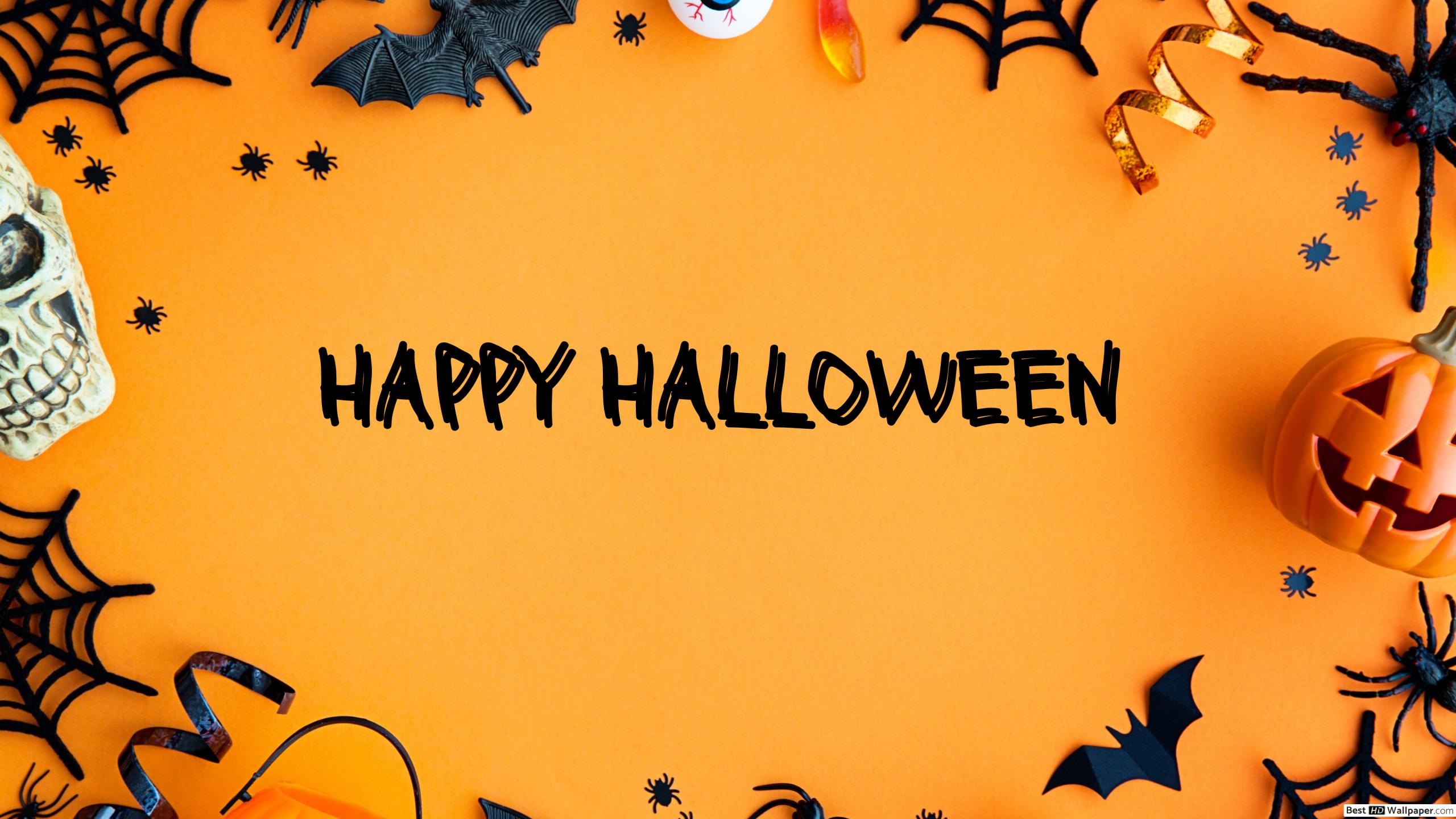Happy Halloween!

At night monsters galore
All come knocking on your door.
Do not be afraid. If you’ve seen
Shout: «Happiness, Halloween!»
Святкування Напередодні Дня Всіх Святих (Halloween) є прерогативою
не тільки західних країн. Своєю загадковістю, веселою похмурістю й
заворожуючими страшилками, він привертає до себе пильну увагу наших
співвітчизників. Щороку на кафедрі викладачі та студенти УІПА відзначають
свято Halloween. Як правило, це проходить у вигляді он-лайн заняття, що
присвячується традиціям цього свята. Студенти за бажанням вбираються у
страшні костюми, співають пісні та розважаються.
Halloween Traditions
CARVING HALLOWEEN JACK-O’-LANTERNS
1. Jack-O’-Lanterns, which originated in Ireland using turnips instead of
pumpkins, are supposedly based on a legend about a man name Stingy Jack who
repeatedly trapped the Devil and only let him go on the condition that Jack would
never go to Hell. When he died, however, Jack learned that Heaven didn’t really want
his soul either, so he was condemned to wander the Earth as a ghost for all eternity.
The Devil gave Jack a lump of burning coal in a carved-out turnip to light his way.
Eventually, locals began carving frightening faces into their own gourds to scare off
evil spirits.
- SEEING GHOSTS
Celtic people believed that during the festival Samhain, which marked the
transition to the new year at the end of the harvest and beginning of the winter, spirits
walked the Earth. Later, the introduction of All Souls Day on November 2 by
Christian missionaries perpetuated the idea of a mingling between the living and the
dead around the same time of year. - WEARING SCARY COSTUMES
With all these ghosts wandering around the Earth during Samhain, the Celts
had to get creative to avoid being terrorized by evil spirits. To fake out the ghosts,
people would don disguises so they would be mistaken for spirits themselves and left
alone. - GOING TRICK-OR-TREATING, THE PAGAN WAY
There is a lot of debate around the origins of trick-or-treating. One theory
proposes that during Samhain, Celtic people would leave out food to placate the souls
and ghosts and spirits traveling the Earth that night. Eventually, people began
dressing up as these otherworldly beings in exchange for similar offerings of food
and drink. - GOING TRICK-OR-TREATING, THE SCOTTISH WAY
Other researchers speculate that the candy bonanza stems from the Scottish
practice of guising, itself a secular version of souling. In the Middle Ages, soulers,
usually children and poor adults, would go to local homes and collect food or money
in return for prayers said for the dead on All Souls’ Day. Guisers ditched the prayers
in favor of non-religious performances like jokes, songs, or other “tricks.” - GOING TRICK-OR-TREATING, THE AMERICAN WAY
Some sources argue that our modern trick-or-treating stems from belsnickling,
a tradition in German-American communities where children would dress in costume
and then call on their neighbors to see if the adults could guess the identities of the
disguised guests. In one version of the practice, the children were rewarded with food
or other treats if no one could identify them.
The association of black cats and spookiness actually dates all the way back to
the Middle Ages, when these dark kitties were considered a symbol of the Devil. It
didn’t help the felines’ reputations when, centuries later, accused witches were often
found to have cats, especially black ones, as companions. People started believing
that the cats were a witch’s “familiar”—animals that gave them an assist with their
dark magic—and the two have been linked ever since. - BOBBING FOR APPLES
This game traces its origins to a courting ritual that was part of a Roman
festival honoring Pomona, the goddess of agriculture and abundance. Multiple variations existed, but the gist was that young men and women would be able to foretell their future relationships based on the game. When the Romans conquered the British Isles, the Pomona festival was blended with the similarly timed Samhain, a precursor to Halloween.
- DECORATING WITH BLACK AND ORANGE
The classic Halloween colors can also trace their origins back to the Celtic
festival Samhain. Black represented the “death” of summer while orange is
emblematic of the autumn harvest season. - PLAYING PRANKS
As a phenomenon that often varies by region, the pre-Halloween tradition, also
known as “Devil’s Night”, is credited with a different origin depending on whom you
ask. Some sources say that pranks were originally part of May Day celebrations. But
Samhain, and eventually All Souls Day, seem to have included good-natured
mischief. When Scottish and Irish immigrants came to America, they brought along
the tradition of celebrating Mischief Night as part of Halloween, which was great for
candy-fueled pranksters. - LIGHTING CANDLES AND BONFIRES
These days, candles are more likely than towering traditional bonfires, but for
much of the early history of Halloween, open flames were integral in lighting the way
for souls seeking the afterlife. - EATING CANDY APPLES
People have been coating fruit in sugar syrups as a means of preservation for
centuries. Since the development of the Roman festival of Pomona, the goddess often
represented by and associated with apples, the fruit has had a place in harvest
celebrations. But the first mention of candy apples being given out at Halloween
didn’t occur until the 1950s. - SPOTTING BATS
It’s likely that bats were present at the earliest celebrations of proto-Halloween,
not just symbolically but literally. As part of Samhain, the Celts lit large bonfires,
which attracted insects. The insects, in turn, attracted bats, which soon became
associated with the festival. Medieval folklore expanded upon the spooky connotation
of bats with a number of superstitions built around the idea that bats were the
harbingers of death. - GORGING ON CANDY
The act of going door-to-door for handouts has long been a part of Halloween
celebrations. But until the middle of the 20th century, the “treats” kids received were
not necessarily candy. Toys, coins, fruit, and nuts were just as likely to be given out.
The rise in the popularity of trick-or-treating in the 1950s inspired candy companies
to make a marketing push with small, individually wrapped confections. People
obliged out of convenience, but candy didn’t dominate at the exclusion of all other
treats until parents started fearing anything unwrapped in the 1970s. - MUNCHING ON CANDY CORN
According to some stories, a candymaker at the Wunderlee Candy Company in
Philadelphia invented the revolutionary tri-color candy in the 1880s. The treats didn’t
become a widespread phenomenon until another company brought the candy to the
masses in 1898. At the time, candy corn was called Chicken Feed and sold in boxes
with the slogan «Something worth crowing for.» Originally just autumnal candy because of corn’s association with harvest time, candy corn became Halloween specific when trick-or-treating rose to prominence in the U.S. in the 1950s.
